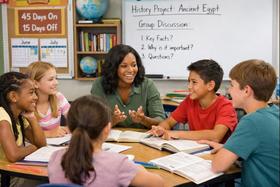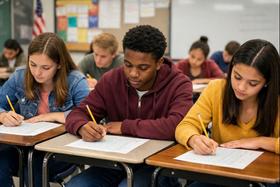Brooker Learning Center serves 29 students in grades 12.
The percentage of students achieving proficiency in math was <50% (which was lower than the Minnesota state average of 65%). The percentage of students achieving proficiency in reading/language arts was <50% (which was lower than the Minnesota state average of 72%).
The student-teacher ratio of 10:1 was lower than the Minnesota state level of 13:1.
Minority enrollment was 14% of the student body (majority American Indian), which was lower than the Minnesota state average of 39% (majority Black).
School Overview
School Type
Grades Offered
Grades 12
Total Students
29 students
Gender %
Total Classroom Teachers
3 teachers
School Rankings
Math Test Scores (% Proficient)
(09-10)<50%
65%
Reading/Language Arts Test Scores (% Proficient)
(09-10)<50%
72%
Student-Teacher Ratio
10:1
13:1
American Indian
7%
2%
Asian
n/a
7%
Hispanic
4%
12%
Black
n/a
12%
White
86%
61%
Hawaiian
n/a
n/a
Two or more races
3%
6%
All Ethnic Groups
Graduation Rate
(10-11)<50%
79%
Eligible for Free Lunch
17%
36%
Eligible for Reduced Lunch (15-16)
15%
7%
School Statewide Testing
School District Name
Source: National Center for Education Statistics (NCES), MN Dept. of Education
Frequently Asked Questions
What percent of students have achieved state testing proficiency in math and reading?
<50% of students have achieved math proficiency (compared to the 65% MN state average), while <50% of students have achieved reading proficiency (compared to the 72% MN state average).
What is the graduation rate of Brooker Learning Center?
The graduation rate of Brooker Learning Center is 50%, which is lower than the Minnesota state average of 79%.
How many students attend Brooker Learning Center?
29 students attend Brooker Learning Center.
What is the racial composition of the student body?
86% of Brooker Learning Center students are White, 7% of students are American Indian, 4% of students are Hispanic, and 3% of students are Two or more races.
What is the student-teacher ratio of Brooker Learning Center?
Brooker Learning Center has a student ration of 10:1, which is lower than the Minnesota state average of 13:1.
What grades does Brooker Learning Center offer ?
Brooker Learning Center offers enrollment in grades 12
What school district is Brooker Learning Center part of?
Brooker Learning Center is part of North Branch Area Public Schools.
Recent Articles

Year-Round Schooling in 2026: Updated Parent Guide
Explore the latest 2026 data, trends, costs, and parent planning tips in the ongoing debate over year-round schooling vs the traditional calendar.

No Child Left Behind: Past, Present, and Future of U.S. School Policy
Explore how No Child Left Behind evolved into ESSA, what it means for 2025‑26 schooling, and what parents need to know about testing, admissions planning, and funding.

Understanding Public School Fees & Optional Costs Guide
Discover what public school fees are required versus optional, with 2026 updates for parents, students, and educators on budgeting and planning.





